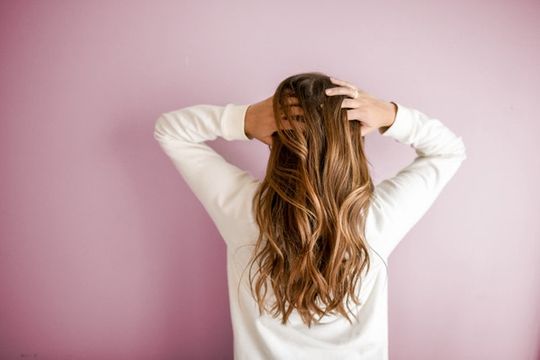The hair color instantly influences a person’s overall style and appearance, which often brings up questions like “what hair color looks best on me?” or “what color hair should I have?”. Especially when there are numerous factors to consider like skin tone, undertone, and eye color, deciding on the best suitable hair color can seem quite complex. Luckily, picking out a hair color can be broken down into a series of small and easy steps that anyone can follow. Furthermore, finding the right hair color is quite rewarding since it not only gives you hair that makes you look significantly more attractive but also lets you discover more about how the facial features work together and synergize to create uniquely beautiful looks.
- What Color Hair Should I have?
- What is the Best Hair Color for My Skin Tone?
- Determining Skin Undertones
- Eye Color
- Matching Hair Color to Skin Tone
- Hair Colors for Cool Skin Tones
- Hair Colors for Pale Skin Tone
- Hair Colors for Neutral Skin Tone
- Season
- Age
- Commitment and Hair Maintenance

What Color Hair Should I have?
The key factor in deciding on a hair color greatly depends on the skin since the hair shade and color should go well with the natural skin tone and undertones. Generally, there are three main categories of skin tones: fair, medium, and dark. Skin undertones also have three main types including neutral, cool, and warm undertones.
What is the Best Hair Color for My Skin Tone?
Since not everyone has noticeably distinguishable skin tones, identifying the natural tone of the skin can appear complex. Fortunately, there are some useful tips for easily determining the natural skin tone.
1. Check the skin tone under natural light. Since the jawline is less prone to any changes in skin color compared to other facial features, exposing the jawline under natural sunlight can accurately indicate the natural skin tone. Consider lightly washing the face, especially the jawline, before checking the tone under natural light. This will make it easier to determine the natural skin tone more accurately.
2. Sunlight test. The skin’s natural reaction to sunlight is quite helpful in identifying the skin tone. Medium to dark skin tones tends to tan more easily. Otherwise, the skin is most likely lighter-toned if it tans but easily results in a burning feeling or sunburn.
Determining Skin Undertones
For identifying the skin undertones, there are also quite a few tips making undertones easily distinguishable.
1. Identify certain color tones. Warmer skins tend to have more gold and yellowish-toned skin while cooler-toned types have more olive and bluish-hued skin.
2. Check the veins. The veins tend to vary depending on the skin, making it an easy and accurate way of determining the natural skin tone. Greenish-colored veins mean a warmer undertone. Purple or bluish-colored veins translate to cooler-toned skin.
3. Try on some jewelry. Certain jewelry looks better on some skin types compared to others, which can be a fun and easy way to identify the skin’s undertone. Gold jewelry tends to look best on those with warmer undertones. Silver jewelry appears most attractive on cooler undertones. If the two pieces of jewelry appear similarly attractive and complementary to the skin, then the skin undertone is most likely neutral.
Eye Color
The ideal hair color also depends on the eye color, since the hair should complement the eye hue for an attractively harmonic appeal. The eyes greatly impact the overall appearance and is a key feature for building a specific style and beauty.
Those with warm-colored eyes tend to also have warm skin undertones, which are best suited with rich toffee and brown-like colors. Golden and warm-toned hair colors greatly complement the warm hues of the eyes, making them appear more attractive with a gleaming glow. Warm-colored eyes are essentially best with warm hair colors and don’t look as great with cooler shades like lighter and bolder tones of blond and platinum.
Cooler-shaded hair colors appear best on those with more colored and distinct eye colors like green-hazel, grey, blue, green, golden brown, and turquoise. This also means that those with cool undertones look most suitable on cooler-shaded hair colors.

Matching Hair Color to Skin Tone
Deciding on hair color can be determined just from the skin tone alone, which is quite handy and accurate since the skin tone and eye colors tend to be similar in terms of warmth or coolness. Matching hair color to skin tone is not too difficult either, since warm skin tones are best with warmer hair colors and cool skin tones are best with cool-shaded hair colors.
Hair Colors for Cool Skin Tones
Skin types with cool undertones tend to look great with colors like subtle blonde hues or more sandy and beige-like shades of blonde. Pairing cool skin tones with also cool-shaded colors will emphasize the complexion for a further appealing look.
Hair Colors for Pale Skin Tone
Hair colors for pale skin and warm eyes should generally be paired with lighter shades of brown, warmer chestnut colors, or a simple black or red hue.
Hair Colors for Neutral Skin Tone
Since they go well with anything, hair colors for neutral skin tones can be either cool or warm, and generally look normal to an extent depending on color richness hair styling. Although neutral skin tones appear compatible with any color, they tend to look better with muted or more subtle shaded hues.
Season
In picking out hair color, the seasons and their various conditions need to be considered. Seasonal consciousness simply means being aware of the possible effects of the environmental conditions on hair color, which also depends on each season. Determining the amount of exposure your hair receives from elements, like sunlight, will indicate an idea of the different conditions that the hair can endure without affecting it. Although seasonal changes bring various elements, it is generally a good idea to stick with more light and brightly-toned hair colors during the warmer seasons and deeply warmer and rich-toned hair colors during the colder seasons.
Age
Age is another factor to consider when picking out the ideal hair color. The age determines which hair colors would appear most suitable and attractive. Since aging is a natural process, the hair naturally grows cooler in tone, which is especially true for soft hair.
For the younger audience, it is reasonably fine to be bold and experiment with extreme colors to discover which ones appeal best according to personal preference and style.
For the more mature and older ones, it is ideal to avoid any harsh and extreme colors, with softer hues being the better choice of hair color.
Commitment and Hair Maintenance
Hair maintenance is often overlooked and proves to be a major factor to keep in mind when deciding on hair color. This factor is increasingly important the more maintenance is required in managing and grooming the hair while also retaining the color. In picking a hair color, decide whether your color choice is worth investing your time, money, and maintenance efforts in. Consider picking out a hair color that not only looks good and complements your natural skin tone but one that is reasonably easy for you to take care of. Otherwise, high-maintenance hair color is fine as long as you are committed to properly handling and maintaining it.
Frequently Asked Questions (FAQs) Regarding the Best Hair Color For My Skin Tone
For a more youthful look, lighter-colored hair is optimal but should come with a reasonably warmer shade that suits your undertone and eye color. It is best to avoid cooler-toned colors and stick with warmer shades for a more vigorous and naturally healthy glow.
Bronde is a blend of blond and brown and is regarded by many to be the most attractive hair color due to its versatility and gorgeous mix. Bronde is universally appealing and looks great on most people regardless of the natural hair length and texture.
0 Comments for “How to Pick What Hair Color Looks Best On Me”